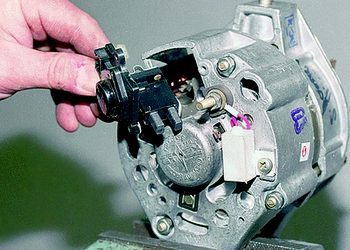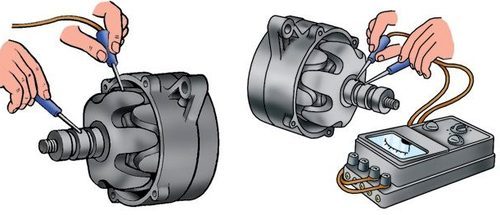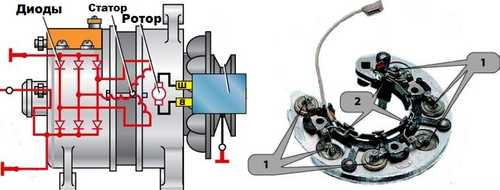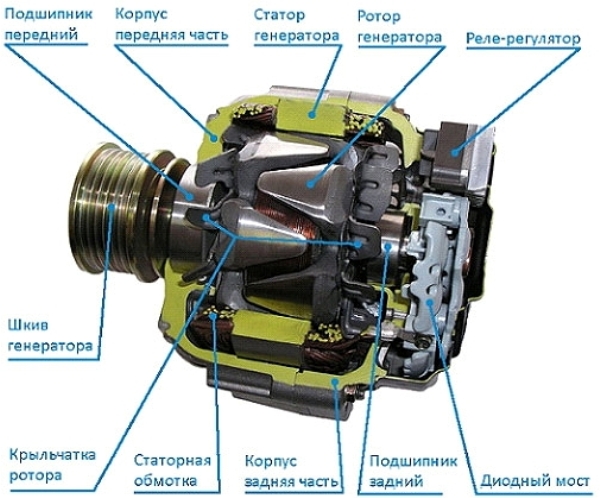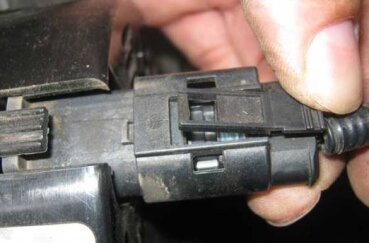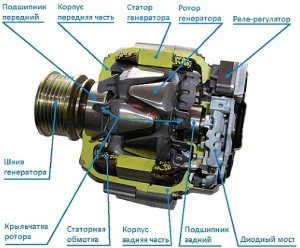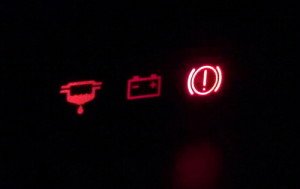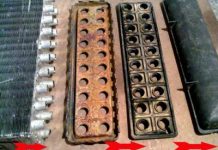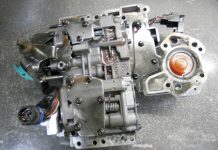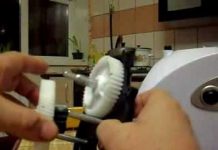In detail: do-it-yourself autogenerator repair from a real master for the site my.housecope.com.
I have already talked about the device of electric current generators, which are arranged similarly to synchronous motors, only differ from them in the collector, therefore the process of troubleshooting and repairing electric current generators is in many ways similar to them.
In this article I will tell you in detail using the example of a do-it-yourself repair of an automobile generator, because it is it that most people most often encounter with repair. The principle of repairing a generator with your own hands as part of a power plant will be similar. Only a voltage rectifier will not be built into its case and the output voltage regulation will work differently.
Cars use a three-phase generator alternating current, but as is known in the on-board network, a constant voltage of 12 volts. To obtain direct current, a rectifier consisting of 6 diodes is used, and a voltage regulator is provided to keep the voltage of 12 volts within acceptable limits.
The generator is arranged quite simply. Voltage is applied to the rotor through graphite brushes and slip rings to excite it. It is driven by a pulley through a belt drive. The rotor rotates in bearings. Electric voltage is generated in the stator windings and converted into a constant voltage using six power semiconductor diodes, three of which are connected to the positive terminal of the generator, and the other three to the negative terminal and "vehicle ground".
- If on the dashboard of the car after starting it does not go out control lamp, this indicates that the generator does not work and does not give current. But sometimes the cause of the alarm can be poor contact of the connector, wires, or a malfunction of the relay.
- Battery discharge. But keep in mind that sometimes the battery is discharged and does not have time to be charged by a working generator when moving over short distances and with the light and electrical devices of the car turned on as much as possible.
- Generator at engine speed 2000-2500 gives a voltage below the permissible limit of 13.2 Volts.
- If the generator generates a voltage above the permissible limit of 14-14.8 Volts (depending on the model), this indicates a faulty voltage regulator, which leads to a disastrous overcharge for the battery.
| Video (click to play). |
Before removing the generator for repair, check:
- Tensioning the drive belt and rotating the pulley, tightening its nut.
- Connection to the vehicle body of the battery and generator.
- The integrity of the fuses.
- Bearing play. It is checked in the same way as for electric motors according to this instruction.
- Before removing and disassembling power unit, if there is generator noise during operation, try disconnecting the wires. If the noise has disappeared, then this indicates a short circuit or interturn short circuit of the stator windings or a short circuit to ground. Repair is not advisable, replacing the generator with a new one will be cheaper. If the noise persists, this indicates bearing wear. They need to be replaced.
- Most often worn brushes are the cause of the malfunction... Check and replace them.
- Poor contact between brushes and slip rings. Check if the spring is not pressing well. It can be stretched or replaced if necessary. Inspect slip rings for scorching or dirt. Use the finest sandpaper for cleaning and a rag for dirt. If the slip ring is severely worn, the rotor must be replaced.
- Damage to the rotor winding can be checked with a multimeter. The windings should ring among themselves for a short circuit or show a small resistance. If the windings are intact, then it is necessary to ring for the lack of electrical connection between them and the case. A defective rotor cannot be repaired and must be replaced.
- Damage to the stator winding are checked in the same way. The multimeter should show a short circuit or very small resistance between the terminals. And there should be no electrical contact between the winding and the generator case. The defective stator must be replaced.
- Check all diodes in the rectifier. They must conduct electric current only in one direction, in the opposite direction (we swap the positive and negative probes) - the resistance is large enough. In the example in the picture, it is necessary to check each diode between points numbered 1 and number 2.
Recommend additionally will get acquainted with the instructions for repairing synchronous electric motors with their own hands, because they carry out troubleshooting in almost the same way as for generators.
Hello dear motorists! Today I will tell you how to repair a generator with your own hands. You may have already encountered such a problem, when the battery discharge indicator suddenly came on on the dashboard, this means that your car has lost its charging, and you will not go long, the battery will last for a maximum of 1-2 hours.
Do not rush to throw away the generator. Try to repair it first. The most common generator malfunction is brush wear.
To check the brush assembly, you need to remove the rear plastic cover by bending the three plastic clips located in a circle.
Remove the cover, unscrew the two screws and remove the voltage regulator.
Check the wear of the brushes, if the residual length of the brushes is less than five millimeters, feel free to buy a new voltage regulator in the store. Sometimes it happens that the generator does not charge or recharges the battery, this is also a malfunction of the voltage regulator. The normal voltage of the generator is 13.5 to 14.5 volts, depending on the engine speed and the load on the generator.
The next generator malfunction is a breakdown of the diode bridge. To check the diodes, the diode bridge must be removed. We unscrew the bolts that hold the diode bridge.
Bend the wires to the side.
Remove the diode bridge. How to check a diode bridge. Read here: How to check a diode bridge?
After removing the diode bridge, be sure to check the stator windings. We do this, turn on the multimeter in dial mode and check all three stator windings for an open. All windings must ring among themselves.
Next, we check the short to ground. We connect one probe of the multimeter to ground, and the second is alternately connected to the terminals of the windings. There should be no short circuit to ground.
Similarly, we check the armature winding.
We check the anchor, there is no short circuit to ground.
Now I will show you how to disassemble the alternator to replace the bearings. We unscrew the four screws connecting the two halves of the generator together.
Unscrew the nut and remove the pulley.
Using a screwdriver, carefully split the generator in two so as not to damage the aluminum covers.
Replace defective bearings with new ones. Reassemble the generator in reverse order.
Friends, I wish you good luck! See you in new articles!
A car generator is an important mechanism, without which you will not go far if it breaks down. As a rule, if it stopped recharging the car battery or malfunctions, then you should first check the tension of the alternator drive belt. If the belt is in order, then you need to start removing, disassembling and repairing the generator, because buying a new one will be much more expensive than replacing some worn out parts (they are very cheap).In fact, the procedure is not complicated, but a little painstaking, the main thing is to put everything together correctly.
We repaired the generator on a VAZ 2110 car (for 2111, 2112 a similar procedure), if you have a model 2106, then see the diagram of the VAZ 2106 generator. There are some differences.
2. Make a longitudinal mark on the generator body with a marker, it will be useful later during assembly.
3. Use the handles to squeeze the three latches on the top cover.
5. Remove the 2 screws holding the voltage regulator.
6. Disconnect the wire from the regulator terminal.
7. Now carefully remove it with the brush holder.
8. Unscrew the screw that secures the capacitor and 4 more that secure the unit itself.
9. Further, in order to remove the rectifier unit, it is necessary to take out 3 wires with a terminal.
10. Now take out the rectifier unit with the capacitor.
11. Now from the rectifier unit, unscrew the nut from the contact bolt, remove the washer with the spacer fork and replace the capacitor. Remove the cap of the capacitor wire from the contact bolt.
13. Next, from the side of the slip rings, using a screwdriver, pry off the cover of the car generator.
14. Press in a vice (so as not to spin) the generator rotor and unscrew the nut that holds the pulley, and then remove the spring washer and the pulley itself.
16. On the drive side, remove the rotor from the cover.
17. Now remove the spacer ring from the rotor shaft.
18. Check the slip rings, if they have pronounced defects (scratches, galls), then they need to be sanded with fine emery paper. If it is impossible to grind them with a sandpaper, then this can be done on a lathe (only you need to remove as small a layer of metal as possible), and then sand again with a fine sandpaper.
19. Next, you need to check the resistance of the rotor winding using an ohmmeter (tester). To do this, you need to connect it to the slip rings. If the tester gives "infinity", it will mean that there is a break in one of the windings, this can only be corrected by a complete replacement of the rotor.
20. Then we check with a test lamp if there is a short circuit in the winding on the rotor housing. This is done as follows: turn on an ordinary incandescent lamp in the 220 V network and lean one wire against the generator body, and the second, first on the first ring, and then on the second. In any case, the lamp should not light up. If, nevertheless, ignition occurs in any of the positions, then the entire rotor should also be replaced with a new one. By the way, in this case, you can use a small 12 V lamp and a car battery, it is easier and safer.
21. Further, if all is well with the rotor, proceed to inspect the stator. On its inner side, there should not be any traces of the armature rubbing against the stator. If these symptoms are observed, then only the bearings should be replaced or the entire generator cover assembly with bearings should be replaced.
22. Further, as with the rotor, we check if there is an open circuit in the stator winding. We connect the test lamp to alternating current and alternately lean the test lamp between all the terminals of the winding. Only in this case, the lamp should be on, if at least at one of the moments it did not light up, replace the stator with a new one or only the winding.
23. Now check the short circuit of the stator windings to the housing. If you connect a test lamp to the terminal of the stator winding, and the wire from the power source to the stator housing, then ignition should not occur. If the lamp lights up, then again there is only one way out - to replace only the winding or the entire stator.
24. Inspect the drive end cover of the generator assembly with bearing. If during the rotation of the bearing you feel a play between the rings, rolling or jamming of the rolling elements, the protective rings are damaged or there are traces of grease leakage, and cracks are found in the cover, especially in the places where the generator is attached, it is necessary to replace the cover assembly with the bearing (the bearing is rolled in the cover) ...
25. On the side of the slip rings, it is necessary to check the free rotation of the bearing. If, during the rotation of the bearing, play between the rings, rolling or jamming of the rolling elements is felt, the protective rings are damaged or there are traces of grease leakage, then the bearing must be replaced with a new one. To do this, press the bearing off the rotor shaft using a puller and press on a new one using a suitable mandrel, applying force to the bearing inner ring.
26. Check the cover of the car alternator from the side of the slip rings. If it has serious defects, then replace it with a new one.
27. Now the most difficult and decisive moment of all your actions is to put everything back together in the order of disassembling the generator. Only at the end, close the lid correctly (according to the marks set earlier). Place the spring washer of the generator pulley with the convex side to the nut, and tighten the latter to a torque of 39–62 N • m (3.9–6.2 kgf • m).
So the repair of the car generator is over, good luck and no more breakdown!
A car generator is a unit that is used to provide electricity to all energy consumers in a car. Failure of the generator device will lead to the fact that all equipment will be powered by the battery, and this will subsequently cause its rapid discharge. When do generators need to be repaired, and what malfunctions are typical for this device? You will find the answers below.
How much does the engine stall when the generator is loaded, what can be associated with current leakage problems, what should be the voltage, why the device does not work and how to repair the breakdown? Do-it-yourself repair of faults in automobile generators is a rather complicated matter, therefore, for a start, it recommends that you familiarize yourself with the main breakdowns of the device. Mechanical faults include damage to the mounting brackets, the unit housing, wear of the pulley and bearings, hold-down springs, etc. There can be many reasons for damage, but in any case, they have nothing to do with the electrical component.
If the car engine does not start and you think that it is the generator that has broken down, then it will be useful for you to find out about the main signs of malfunctions in the operation of the unit:
- A low battery indicator appears on the dashboard when the engine is running. The light can blink or stay on without interruption.
- In case of incorrect operation of the device, when a higher load is imposed on the unit than that for which it was designed, the battery comes into operation to support the power supply of the equipment. This can cause the battery electrolyte to boil off.
- The next symptom is that when you turn on the headlights, you can see how the optics began to burn more dimly. If you press the gas pedal, which will lead to an increase in the speed of the power unit, then the brightness of the optics will be restored to the required level.
- The device howls, hums, or whistles. If during the operation of the unit, extraneous sounds began to appear, this indicates a malfunction in its operation, which may be different. Also, the generator gets very hot.
- The car engine stalls from time to time for no apparent reason. A malfunction of this kind may indicate that there is a lack of voltage in the on-board network required to power electrical equipment. If at the same time the battery is fully charged, then most likely the reason lies precisely in the generator.
Now let's consider the possible causes of malfunctions, due to which it may be necessary to remove, disassemble and repair the generator device of the car:
- Pulley damage or wear. If we are talking about serious malfunctions and significant damage to the pulley, then it will be easier to replace it. In some cases, repair and refurbishment is allowed, but it is best to change the device.
- Damage or natural wear of slip rings, which can be damaged.
- Malfunction of the regulator. The voltage regulator is designed to equalize the operating value in the electrical network of a car, its breakdown will lead to voltage surges in the network.
- Breakdown of the diode bridge of the unit. If the diodes fail, the first symptom of a breakdown is the absence or too weak spark on the candles, and the battery capacity can also be reduced.
- Closing the turns of the stator winding. Sometimes the problem can be solved by rewinding the winding, but often it is easier to simply replace it.
- Bearing wear. If the bearing elements are worn out and broken, additional noise will appear in the operation of the unit.
- Damage to the power supply circuit.
How to disassemble and how to repair the device? Below are some basic troubleshooting tips.
These tips are relevant if you know the main causes and symptoms of breakdowns:
Sometimes self-repair of the unit is impractical, so car owners have to change the device. We will consider the replacement procedure using the example of a Lada Kalina car.
To successfully complete the replacement, prepare the following tool:
- wrenches for 8, 13 and 19, for more convenience, use ring and open-end;
- ratchets with heads of the same size;
- extension cord with a crank (video by AndRamons channel).
The replacement procedure should be carried out taking into account the recommendations and requirements of the manufacturer, which are indicated in the service book for operation. Before proceeding with the replacement, be sure to study the manual.
So, how to remove and replace the unit yourself:
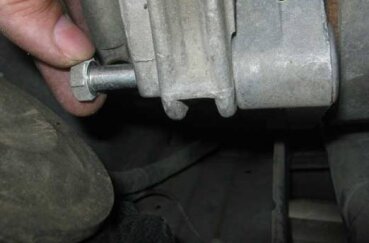

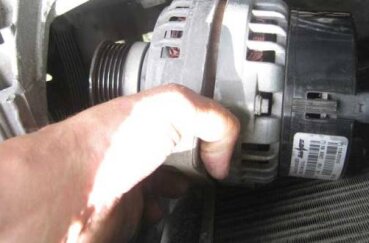
Timely repair and maintenance of the unit are the main aspects that will increase the service life of the device.
What nuances should be considered:
An illustrative lesson with a detailed description of all aspects on the principle of the unit's operation is shown in the video below (the video was published by Mikhail Nesterov).
Car generator - an electrical installation that converts the mechanical energy of the engine into electrical current. The car generator in the engine compartment of the car performs the function of charging the battery, and also powers the electrical equipment of the running engine. It is no secret that without proper operation of this device, normal engine operation is impossible. I propose to understand the design of the generator, as well as consider some possible breakdowns and options for their elimination.
The device itself belongs to the category of electrical equipment, which has a rather complex design. Failure of the generator will lead to the lack of charging the battery, as well as the failure of the car motor. Buying a new generator or repairing a generator in a service center is not cheap and most likely will cost you a pretty penny.
However, if you are not from the “timid ten”, but you have a soldering iron at your disposal, and you know how to use it purely by accident, then it makes sense to try to repair the car generator yourself.
I propose, for a start, to disassemble the main "diseases" that often arise in the generator:
1. The device has stopped charging.
2. The device outputs too little voltage.
3. The generator is overcharging.
4. During charging, a warning light on the dashboard flashes.
5. During the operation of the device, some extraneous noise is heard.
The next step will be to determine the nature of some of the problems and determine the "root of evil".
If the generator has ceased to provide a normal battery charge, this may mean the following:
1. The fuse has blown, or just moved a little (contacts).
2. Critical wear of the brushes, or the brushes are broken or jammed.
3. The regulator relay is damaged.
4. The winding may be short-circuited or the rotor or stator circuit broken.
In the first three cases, it is likely that the defective parts will need to be replaced. However, if you have all the signs of the latter, then you have to tinker a lot.
There are several solutions to the problem.
You can just buy a normal stator winding, or send a broken one for repair and replace it. If the winding breaks, it is necessary to repair the rotor. Often, a winding break occurs in the slip rings (it can also be unsoldering one end of the winding). In this case, you will need to rewind the turns of the damaged section to the point of rupture. The wire must be long enough to solder to the slip ring. Next, you need to solder the broken off end of the winding from the slip ring and then make a serviceable end from the same winding (broken back, wiring).
It is possible that there was a desoldering of the end of the winding, which is located on the rotor. If so, then you just need to solder it back. If there is a need to clean the slip rings, do so. If there is a deep defect, it is removed with a file.
At the same time, as they say, you can eliminate one more "headache" - the noise of the generator. If the problem is urgent, you should visually inspect the bearing that is located on the rotor and, if necessary, replace it. However, if the bearing has no backlash, then it must be carefully removed and washed, for example, in gasoline, and then lubricated. The lubrication should be approximately 30% of the volume of the bearing itself. Then reinstall the bearing.
Battery overcharged or poorly charged.
If you have this kind of problem, you will need to look for a solution in the battery relay, if necessary, replace it. As a variant of this breakdown, the breakdown of the diode, which is located in the diode bridge, can also be considered.
The signal lamp is on when the current is correct.
Most likely, the reason lies in the breakdown of one or several diodes at once, which are responsible for the power supply chain passing through this lamp. You should look for these diodes on the same diode bridge. Unscrew three nuts on the generator, using a key for 7, and remove the stator winding fastener, kick back the nut on the generator output mount with a "+" sign and remove the diode bridge. By performing this procedure, you can replace the stator winding.
That's all. I hope my article will help you repair your auto generator yourself. Remember that you need to have at least some knowledge of electrical engineering to undertake this kind of work.
It is very important to know how the diagnostics and repair of generators of trucks and cars is carried out, because this unit plays an important role in the vehicle. Is it possible to independently carry out such an operation, let's figure it out.
A generator is a device responsible for converting mechanical energy, which appears due to the rotation of the crankshaft, into electrical energy. It turns out that its performance has a direct impact on the operation of most auto components. Therefore, it is very important to pay attention to the timely maintenance of the car generator in order to identify any malfunction of it even at the initial stage.
Based on the foregoing, it becomes clear that it is this element that provides battery power, as well as power supply to various electrical consumers. The latter include the ignition system, without which the car simply will not start, lighting devices, an on-board computer, etc. So if this element fails, then the operation of the vehicle will not be possible. Consider how to identify and repair various malfunctions of a car generator, and when the situation will be saved only by new parts.
Sitting behind the wheel and turning the key in the ignition lock, you see how the corresponding indicator on the dashboard immediately comes on, which is the main indicator of the generator's health. If the control lamp does not work, then prompt maintenance will help identify and eliminate the defect. However, this is far from the only sign of generator breakdown in cars; it is also worth looking at the voltmeter readings. If its arrow is initially in the red zone or deviates towards the beginning of the scale, then it is also worth making an immediate diagnosis.
You can understand that it is necessary to repair the car generator, just by listening to your "iron horse", in the event of a malfunction, a characteristic noise very often occurs.



